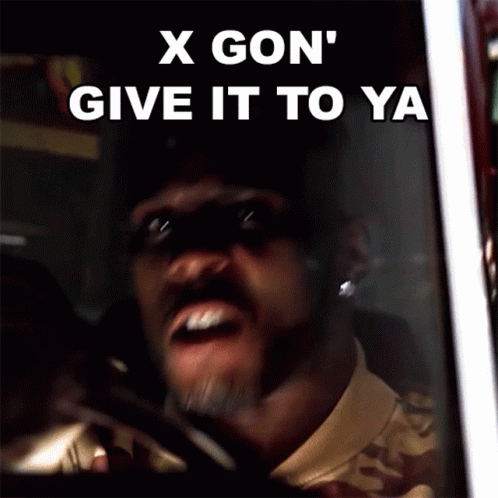Twitter has undergone a dramatic transformation since Elon Musk acquired the company in October 2022. The latest change came this past weekend when CEO Linda Yaccarino unveiled a striking new logo: a minimalist white "X" on a black background. This rebranding signals Musk's bold vision to turn Twitter into a "super app" called X.

Saying Goodbye to the Iconic Twitter Bird
The original Twitter bird logo, with its cheerful blue colour palette, has been an iconic symbol of the platform since its launch in 2006. For many, it encapsulates the service's identity as a fun, public "town square" for sharing thoughts in 280 characters or less.
However, Musk believes the logo no longer reflects his grand ambitions for the company. On July 23rd, he tweeted that Twitter would soon "bid adieu" to the bird because "X" will represent an all-encompassing digital experience.
What Will X Be?
According to Musk and Yaccarino, X won't just be a microblogging platform. Instead, it aims to be a one-stop app that offers everything from banking and payments to meal delivery and ridesharing.
This would make X similar to China's WeChat "super app," which has over 1 billion monthly active users. However, successfully competing with WeChat or Meta's Threads in the US market will be an enormous challenge.
Linda Yaccarino's Vision for X
In another tweet, Yaccarino, Twitter's current CEO, expanded on her vision for X as a multifaceted digital experience:
"X is the future state of unlimited interactivity - centred in audio, video, messaging, payments/banking - creating a global marketplace for ideas, goods, services, and opportunities.
Powered by AI, X will connect us all in ways we're just beginning to imagine."
This underscores X's intent to be far more than just a social media platform. Yaccarino describes a future where X becomes an immersive portal for entertainment, commerce, finance, and more.
The possibilities are tremendously exciting. But actually delivering on this promise will require overcoming massive technical challenges. Seamlessly integrating all these features at scale, while ensuring security and a positive user experience, is no small feat.
Of course, a key part of the plan is leveraging AI to power X. This could enable intuitive interfaces, predictive recommendations, and other innovations. However, AI itself comes with risks around issues like algorithmic bias.
While Yaccarino's vision is ambitious, it remains to be seen if X can truly realize this futuristic digital utopia. But if it succeeds, X could profoundly reshape how we interact online and access services. The stakes are clearly high for Musk's reimagined "global town square."
Big Promises, Bigger Challenges
In her enthusiastic tweets, Yaccarino said X will "go further" and "transform the global town square" in ways Twitter never achieved. But many are sceptical of this lofty vision.
X faces huge hurdles, like completely redesigning the app, building complex new features, and getting people to change engrained social media habits. Even the name itself may struggle to catch on, with Musk admitting "old habits die hard."
A Cautiously Optimistic View
Not everyone greets X with complete scepticism. Some see glimmers of promise in Musk's ambitious vision, even if realizing it fully could prove difficult.
This viewpoint acknowledges reinventing Twitter comes with inherent risks. Fresh ideas can flop or cause unintentional harm. But innovation also requires bravery to try new approaches that may better serve users' needs.
Completely dismissing or accepting X this early both seem premature. WeChat demonstrates the engaging potential of a multifaceted digital ecosystem. Early criticisms toward changes at Netflix ultimately faded once benefits materialized.
Rather than judge prematurely, maintaining an open and analytical perspective may be warranted. Major technological advances often face initial doubt before finding an important niche.
X's path forward remains wholly unclear. Yet Musk is clearly thinking outside the box, which carries some inherent value. While caution is justified, a severely narrow mindset can also inhibit creative progress.
Ultimately, X's success or failure will only become clear over time as iterations unfold. Until then, a balanced viewpoint toward both risks and possibilities seems prudent.
A Shrug from Twitter's Cofounder
Perhaps the most intriguing reaction came from Jack Dorsey, the cofounder and former long-time CEO of Twitter. Despite helping Musk acquire the company, Dorsey now seems indifferent toward the rebrand.
In a tweet, Dorsey essentially dismissed the change as insignificant, advising people to "keep calm and just x through it." This contrasts with the passionate reactions from branding experts.
Dorsey appears unconcerned with Musk discarding the Twitter bird he helped create. His nonchalant response could suggest this move won't fundamentally alter the platform's identity or experience.
Of course, Dorsey's relationship with Twitter has grown complicated. After initially advocating for the sale to Musk, Dorsey has since distanced himself amidst clashes. His apathy toward the rebrand may reflect this divide.
Overall, Dorsey seems wholly unimpressed by Musk's bold rebranding initiative. For the man who built Twitter alongside the iconic bird logo, bidding it farewell evokes little more than a shrug.
Mixed Reactions from Branding Experts
The rebranding of Twitter to X has elicited strong reactions from branding experts, designers, and former Twitter employees. Their comments reveal just how polarizing this change has been.
Some see discarding the iconic Twitter bird logo as an arrogant move by Musk to erase the past. As former Twitter executive Bruce Daisley argues, the bird symbolizes the work of past employees and Twitter's brand equity. Replacing it entirely damages recognition while serving Musk's "fragile ego."
Others critique the X logo itself as too generic, ominous, and uninspired. It lacks meaning, personality, and connection to Twitter's legacy for many. Designers pan it as something an amateur could create quickly without much thought.
However, some do see method in Musk's branding madness. The minimalist X provides a blank slate to reinvent the platform. It signals sweeping change is coming, which may be precisely Musk's goal.
But even supporters admit potential pitfalls, like users struggling to adopt terms like "X-ing" instead of tweeting. Musk wants a clean break from the past, but residual brand associations may persist.
Reactions are diverse, as these contrasting perspectives show. But Musk has clearly jolted the branding world with an unexpected, controversial move. Time will tell if ditching a globally iconic logo for a single letter pays dividends or severely backfires.

What's Next for Twitter's Bird?
For now, the Twitter bird still exists within the app and on embedded tweets. But it seems destined for extinction under Musk's new regime.
Only time will tell if X can deliver on its sky-high promises of revolutionizing digital communication. Musk has made big changes quickly, like firing half the staff and overhauling verification. Still, rebranding a global social media giant is an entirely different challenge.
The bluebird was a beloved icon for many. Bidding it farewell won't be easy. But X now has the chance to recast Twitter's identity and potentially make a massive impact on the digital landscape. The company's future remains unpredictable, but one thing is clear: big changes are coming in the Musk era.







